Paving 101: Slate Adds Color to the Garden
http://decor-ideas.org 08/20/2015 20:13 Decor Ideas
Slate is a common exterior paving material in areas with nearby slate quarries. Rich colors not present in other stone types, from the deepest charcoal to jade green tones, contribute to its uniqueness. Welsh slate, used in building since Roman times, has a distinctive plum-purple shade. Read on to learn more about slate for landscape paving.
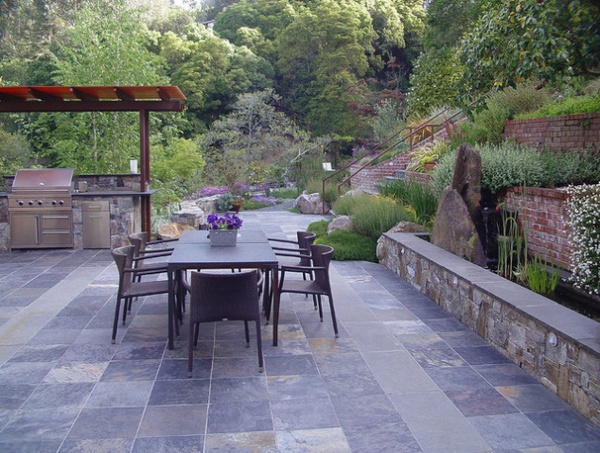
The basics: Slate is a natural quarried stone that was first used as a roofing tile. It has become more widely used as a paving material in areas near slate quarries, for its beauty and longevity.
Cost: $8 to $20 per square foot installed; varies widely by location.
Shown: African slate square pavers with strips of basalt accent pavers
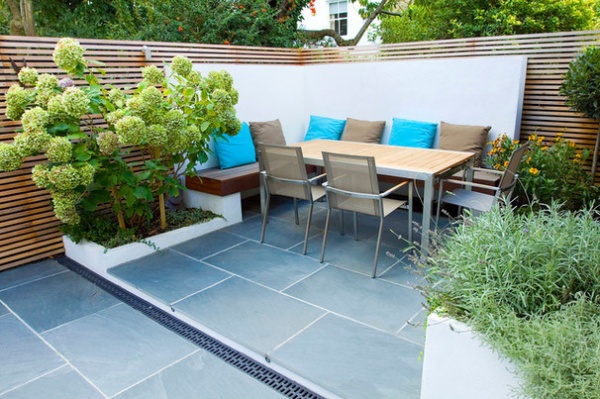
Pros
Richly colored and unique shadesStrong and durableExcellent frost resistance; suitable for cold climatesNatural cleft surface provides nonslip finishMore affordable that other paving choices when sourced nearbyCons
Expensive when sourced outside the local regionHeavy, making it difficult to use for DIY projectsShown: Large, dark rectangular slate pavers set with a light-colored mortar with about a ¼-inch joint provide a beautiful contrasting pattern on a patio.
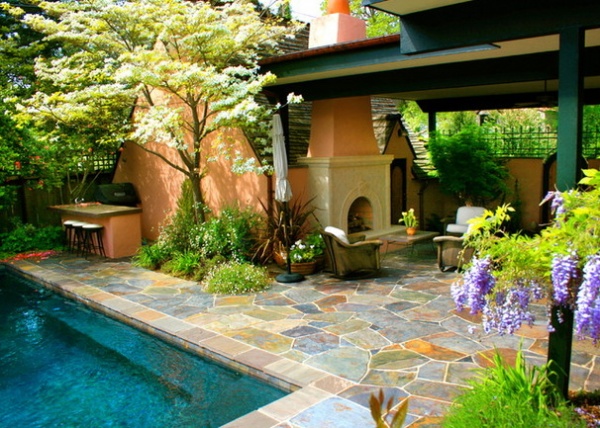
Shown: Peacock slate flagstone
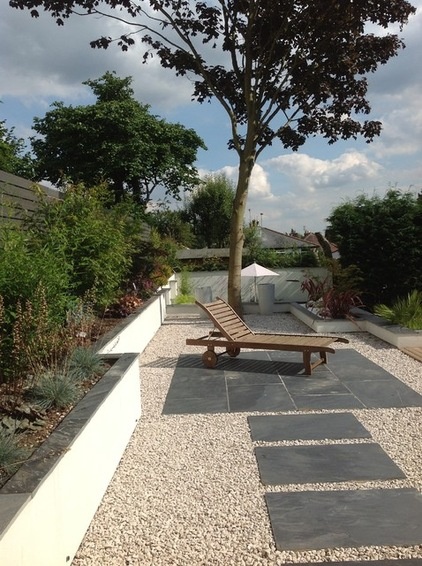
Size and color: Slate is available in cut dimensions similar to other cut natural stone pavers, from 6-inch-by-12-inch rectangles up to 24-inch-long pieces. It is also available with rough natural cleft edges as flagstone. For landscape paving, slate needs to be at least 2 inches thick to withstand foot traffic without chipping. A slightly thinner paver can work outdoors only if it is installed like a tile and mortared directly to a concrete pad.
A deep gray range of colors is most common, but slate also comes in green, purple and tan. Welsh slate, the most well-known slate, has been quarried in the U.K. for centuries and is plum-purple. The darkest color available is a very deep charcoal gray.
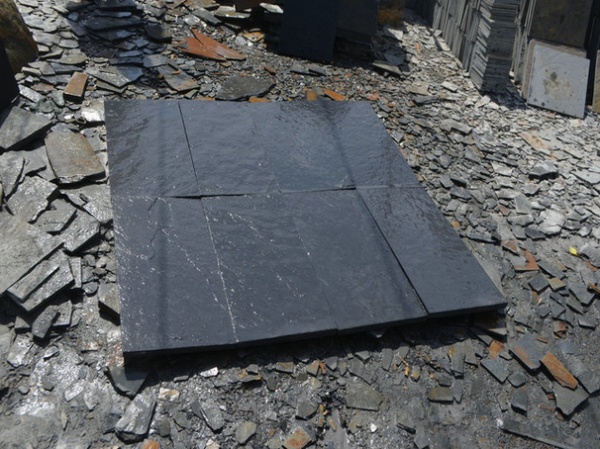
Finishes: Slate is available in multiple finishes; a natural rough finish and a smooth finish are the two most common treatments. Make sure you select a finish that is rough enough for outdoor use; landscape paving needs some texture to make it nonslip.
Shown: Deep charcoal slate pavers with a natural finish in a stone yard. Notice the surrounding slate chips, which are “slate waste,” a suitable gravel replacement.
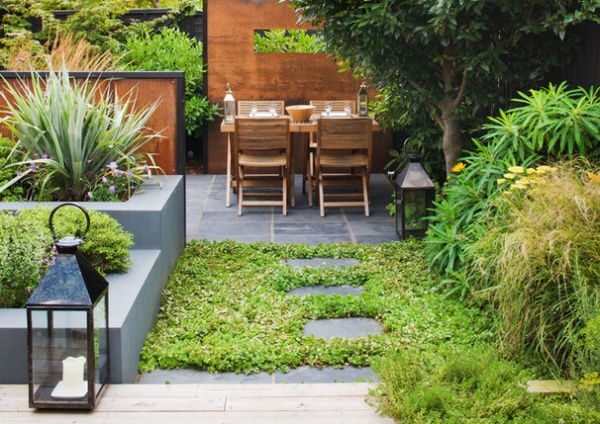
Sustainability: Slate, as a natural building material, is a sustainable choice when sourced locally. The most prolific slate quarries are in Spain, the United Kingdom and valleys in Vermont and New York.
As mentioned, small rock pieces and chips make up slate waste. They are by-products of slate extraction and can be used in place of river rock or gravel to create swales or as paving accents.
Shown: Slate stepping stones with a ground cover surrounding them lead to a slate-paved patio for dining.
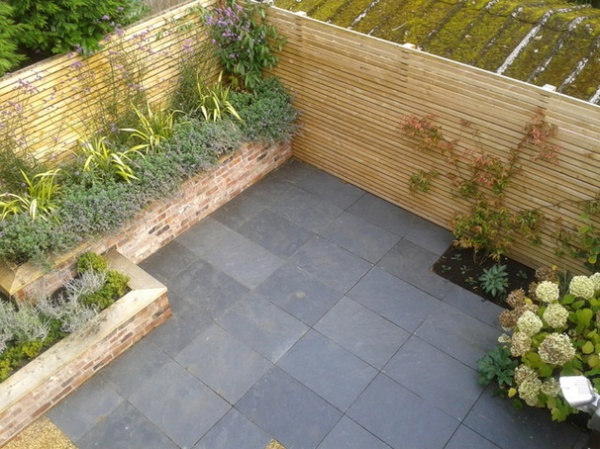
Shown: Square slate pavers provide a nice medium gray paving for a contemporary courtyard.
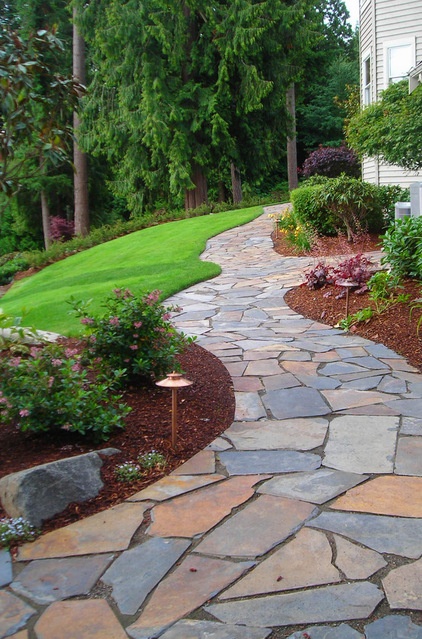
Maintenance: Slate has a high iron content, which can cause it to develop a reddish patina over time. The amount of iron present and the patina that develops depend on where the slate was quarried and the composition of the stone there. Slate does not stain easily, so a sealer is necessary only if you like a more polished look. A gentle pressure washing annually is all that’s needed to maintain slate.
Shown: Montana slate dry-laid on compacted gravel with a black plastic snap edging
More
How to Pick the Right Floor for Your Garden Room
See more patio ideas on Houzz
Related Articles Recommended












